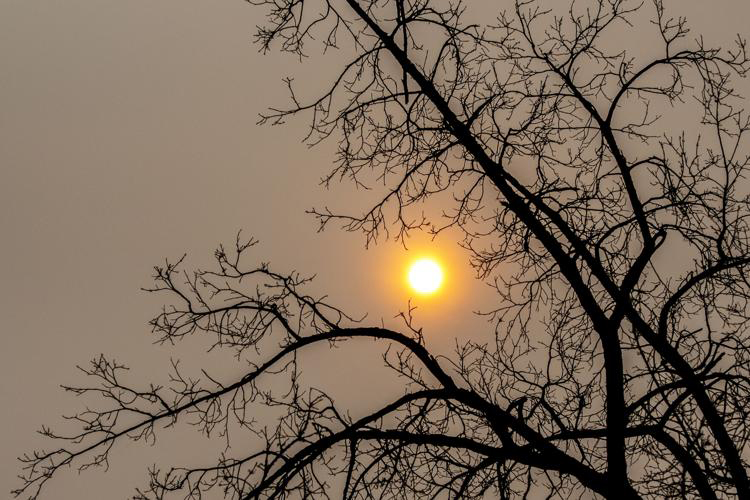
The science of smoke and health
Listen
(Runtime 1:10)
Read
As more people are exposed to wildfire smoke each year, more researchers are questioning how that smoke could affect health outcomes.
Dr. Keith Popovich is a pulmonologist at TriState Health in Clarkston. Though inconvenient, he said, the wildfire smoke in the Inland Northwest during the summer has generally been thought of as an irritant that mainly affects people with sensitive airways.
“It can cause asthma to worsen, or bronchitis or mucus production to worsen and ideally, we would not have to breathe any of it,” he said. “(But) it’s unlikely to bother somebody without a predisposing condition.”
Some kinds of smoke, such as those from burning buildings, are known to be more dangerous, Popovich said.
“With manmade materials, vinyls, plastics and things of that nature, those have the capacity to release more toxic fumes,” he said.
Annie Doubleday is a researcher at the University of Washington, who recently completed her Ph.D. in environmental health. She said it’s true that burning synthetic materials will produce more toxic smoke.
Now, she said, a growing body of research suggests that even wildfire smoke on its own could have negative health impacts for healthy adults that go beyond respiratory distress.
Doubleday is the lead author on a study published this May looking at emergency department visits across the state of Washington on days with and without wildfire smoke.
The researchers found an immediate increase in respiratory-related emergency visits across all age groups, with the biggest increase among ages 19 to 64, and asthma-specific visits highest among ages 5 to 64.
That means even young and healthy people could be at risk for adverse health effects when exposed to wildfire smoke, Doubleday said.
“Kids in general, older folks, folks with underlying conditions are definitely sensitive to smoke,” she said. “But really, to some degree, we all are.”
The study also found an increased risk of cardiovascular-related emergency visits for several days following exposure.
Scientists still don’t know all the long-term health effects of breathing wildfire smoke, Doubleday said, but it seems to pose some risk even for those who don’t have respiratory illnesses.
That doesn’t mean that a little smoke exposure is something to be worried about, she said. But it is worth keeping in mind that being young and healthy might not preclude someone from negative health outcomes.
“I think we are going to be exposed to smoke increasingly in the coming years and decades,” she said. “It’s important to try to lower our exposure as much as we can.”
Long-term health effects, beyond a few days after smoke exposure, still need to be studied, Doubleday said.
“We really don’t yet know much about long-term impacts,” she said. “What we do know, is what we know from larger air pollution research. We know that there are long term impacts from exposure to air pollution over time.”
Learning more about the connection between smoke and health could be especially important for Western states, where wildfires often account for the majority of poor air quality, said Nancy A. Johnston, an associate professor of chemistry at Lewis-Clark State College.
Johnston has been studying air quality in the Lewiston-Clarkston Valley since 2019. Her work includes co-authorship of one paper that found a potential increased risk of cancer from exposure to wildfire smoke, and research on how the Valley’s paper mill might affect health outcomes for the surrounding community.
Now, she’s collaborating with Soyoung Jeon of New Mexico State University, Ben Barst of the University of Alaska Fairbanks and Gayan Rubasinghege of the New Mexico Institute of Mining and Technology to study the health effects of wildfire smoke.
Their work is being funded by the IDeA Network of Research Excellence (INBRE) which emphasizes supporting scientific and biomedical research in states where it is underfunded, Johnston said.
Smoke’s health effects are particularly relevant in the rural West, where a fire’s remote location can often make it difficult to fight, Johnston said.
“I’m thinking of the Frank Church wilderness, for example, in the middle of Idaho. That’s hard to get to,” she said. “Often, we let it burn. But then it can travel miles and impact people downwind.”
The crux of this project, Johnston said, will be to look at the compounds wildfire smoke exposes people to and their health risks down the line.
The researchers will work to categorize compounds found in the smoke and do biological experiments on simulated lung tissue to observe how it’s affected. The team also will look at data such as hospitalizations and other short-term health impacts when a population is exposed to wildfire smoke.
“(We would) kind of predict like, ‘OK, if wildfires increased by, say, 20%, then what’s the health risk in the next decade?’” she said.
By partnering with other researchers, Johnston said, the team will be able to dive deeper into how specific compounds affect cells on a biological level.
“I know the chemistry, but I don’t know the biology and the toxicology as much. But with this team, it brings it all together,” she said.















